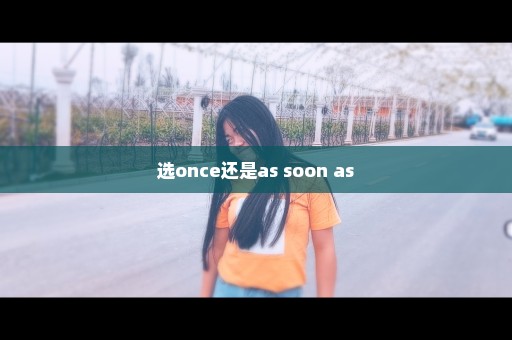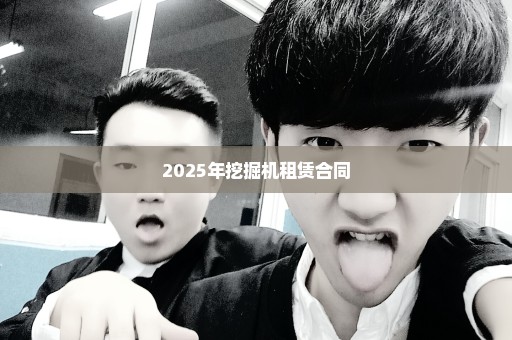选once还是as soon as
as soon as表示一.就,其中的从句通常用一般现在时表示将来时.
这个短语用的比较常用,口语和书面语都可以.它的特点是,在句子中的位置比较灵活,而且可以用于各种时态.例如:
I’ll write you as soon as I get there.
我一到那儿就给你来信.(一般现在时)
once的用法总结
1.once用作连词时,意为“一旦……就……”,用于连接时间状语从句,相当于as soon as.
如:
Once you start,you will never give up.
一旦你开始了,你就不要放弃.
注意:once引导的是时间状语从句,从句要用一般现在时代替将来时.
2.once用作副词时,意为“曾经;一度;从前”.它是一个不确定的时间副词,其位置一般是在行为动词之前,系动词之后.
如:
Once he lived in America,but now he lives in England.
他曾经生活在美国,但现在他生活在英国.
3.once用作副词,也可意为“一次”的意思.两次是“twice”,三次是“three times”,四次是“four times”.
The old professor comes to see us once a week.

那个老教授一周来看我们一次.
4.注意once用作副词时,在句中的位置不同表示的意思也不同,所以要特别注意.
如:
I once went to Shanghai.我曾经去过上海.
I went to Shanghai once.我去过上海一次.
5.once构成的一些短语的用法:
(1)at once(立刻;马上)
Finish the task at once.请立刻完成任务.
(2)once again(再一次;又一次),相当于once more.
Read the passage once more.把课文再读一遍.
(3)once in a while(偶尔;间或)
We went to see our English teacher once in a while.
我们偶尔去看我们的英语老师.
(4)all at once(突然),相当于suddenly.
All at once,they rushed out altogether.
突然,他们都一起冲出去了.
(5)once upon a time(很早以前;从前)
Once upon a time there was an old man named John Hill.
从前有一个名叫约翰?希尔的老人.
once 是什么词?都怎么用?
at once, immediately, right now, right away
这四个短语常可互换,只是说话角度上有细微区别。
1.at once等于now, without delay。如:
Do it at once.立刻就做。 Come here at once!马上就来!
at once 也有“at the same time,together”的意思。如:
Don’t all speak at once! 不要全体同时说话!
注意:all at once=suddenly
2.immediately和at once相同,但语意上侧重于“紧接着”。如:
She answered almost immediately.她几乎立刻作了回答。(紧接着问,立刻作答)
He will be ready immediately.他马上就会准备好。(暗指还需几分钟)
注意:immediately还可做连词,等于as soon as。如:
I told him immediately he came.他一来我就告诉他了。
3.right now指at this moment, right away指毫不犹豫或毫不耽误的“立即”。如:
If you get the address, let me know right away.你看到地址,请立即告诉我。
Shall we begin right now? 我们现在就开始吗?
for the moment
暂时
for the moment, 现在暂时. in a moment, 立刻马上. in nature, 本质上. on occasion,
现在
at the moment, 现在此刻. for a moment, 片刻一会儿. for the moment, 现在暂时.
目前
for the moment 暂时目前for the present 暂时目前for the sake of 为了为了的利益for
定语从句一、考点聚焦1、功能:相当于形容词,修饰名词或代词,在句中作定语2、位置:定语从句置于被修饰词之后 Those who are willing to attend the party, sign here please. 3、先行词:被定语从句修饰的词称为先行词(1)先行词一般是名词和不定代词,如:some-, any-, every-和no与-boy, -thing的合成词;或all、none、any、some、that、those等代词。数词也可以作先行词,人称代词也同样可作先行词。(2)先行词与关系词是等量关系。必须注意两点:①先行词在从句中作主语时,从句谓语动词的数由先行词而定。This is the place which is worth visiting.②关系词在从句句子中充当了成分,其意思就是先行词的意义,所以在从句中不能重复其意。There are many places we can visit(them)in China.4、关系词:引导定语从句的都称关系词关系代词:who, whom, which, that, whose, as。关系副词:when, where, why。that偶尔也作关系副词。5、确定关系词的步骤(1)先找关系词,看先行词指的是什么。(2)看关系词在从句中所充当的成分。6、在定语从句中,当先行词指物时,下列情况的关系词宜用that而不用which(1)先行词被①形容词最高级 ②序数词 ③数词几种词修饰或被 ④only、any、few、little、no、all、one of等修饰时。(2)先行词为all、much、little、none、few、one、something、anything等不定代词时。(3)先行词中既有人又有物时。He was looking pleasantly at te children and parcels that filled his bus.(4)先行词在主句中作表语关系词在从句中作表语时。The village is no longer the one that was 5 years ago.(5)当主句中含有疑问词which时。Which are the books that you bought for me ?7、宜用which而不用that的情况(1)在非限制性定语从句中(2)在关系词前有介词时(3)当先行词本身是that时(4)当关系词离先行词较远时8、关系词who与that指人时,也有不同情况分别用不同的关系词(1)当主句是there be句型时,关系词用who。(2)先行词是为anyone、those、someone、everyone、one等词时,关系词用who。(3)当主句是who作疑问词时,关系词用that。Who is that girl that is standing by the window?(4)whom在从句中只作宾语,可被who取代。9、whose作关系词既指人又指物,在从句中作定语。如:Do you know Mr.Smith whose story is very moving ?There is a room, whose window faces the river.There is a room, the window of which faces the river.10、关系代词as,在从句中作主语、宾语和表语。(1)先行词被such和the same修饰,或句型as many(much)中,从句都用as 引导。Such books as you bought are useful.The school is just the same as it was 10 years age.注意:区别①such … that … 引导的结果状语从句。They are suchlovely children that we love them much.②the same … that … 引导定语从句。I want to use the same tool that you used just now.(2)无先行词的定语从句用as和which引导。区别:①意义上:as 含有“这点正如……一样”。②位置上:as 从句可置句首,也可在另处。He didn’t pass the exam, as we had expected.There is lots of air in loose snow, which can keep the cold out.As is known, the earth is round, not flat.11、关系副词when与where、why、thatwhen 指时间 = in / at / on / during whichwhere指地点 = in / at / from / whichwhy指原因 = for which当先行词为way、day、reason、time时,可用that作关系副词。(非正式场合)I don’t like the way that / in which / he talks.当time作先行词时,关系词可以省掉。This is the first time I have given you a lesson in French.12、必须注意的问题(1)关系词作主语时,从句中谓语的数。(2)注意区别定语从句与强调句。①定语从句中关系词作从句成分,复合句。②强调it无意义,that / who不是引导词。③强调it is / was和that / who后如果句子意思讲得通则是强调句,讲不通则不是。It is the museum that / which we visited last year.(定语从句)It was in the hotel that we stayed last night.(强调句)(3)定语从句与同位语从句的区别。①定语从句引导词被称为关系词,that充当主语、宾语、表语。有时可省略。②同位语从句引导词被叫做连词,that不能充当任何成分,不可省。Word came that their army was defeated.(同位语)We expressed to them our wish that was the same as their.(定语)(4)关系词在从句中省略的情况。①关系词作宾语,前无介词时。②关系词作表语。(5)限制性定语从句与非限制性定语从句的翻译。(6)关系词前有介词或复杂介词,关系词只能是which和whom。(7)几个特殊的定语从句句型:①He is the only one of the students who has got very good marks in the match.(句中one为先行词)He is one of the students who have got good marks in the match.(句中students为先行词)②Is this place the one (that) we visited yesterday?Is this the place(that / which)we visited yesterday ? ③He stood at the window, from where he could see what was happening.④It may rain, in which case the match will be put off.
鹏仔微信 15129739599 鹏仔QQ344225443 鹏仔前端 pjxi.com 共享博客 sharedbk.com
图片声明:本站部分配图来自网络。本站只作为美观性配图使用,无任何非法侵犯第三方意图,一切解释权归图片著作权方,本站不承担任何责任。如有恶意碰瓷者,必当奉陪到底严惩不贷!
 百科狗
百科狗



